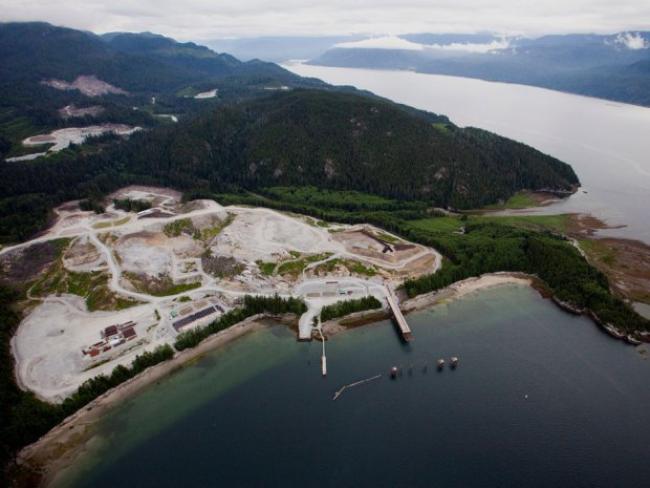Articles Menu

Proposed LNG projects are under pressure as prices are stuck in the US$7-US$8 per million British thermal unit range, compared to the US$11-US$12 needed long-term to make project economics work.
The window to build liquefied natural gas projects in Canada and elsewhere has closed amid a global supply glut, says global energy consultancy Wood Mackenzie.
“There is a clear reluctance by companies to stand down, but the reality is that the window of opportunity closed over six months ago for everyone, not just for Canada,” Noel Tomnay, vice-president global gas and LNG research for Wood Mackenzie said in an interview.
Qatar and Australia led the first two waves of LNG development with the U.S. spearheading the third wave, even as Canadian and East African proposals were stalled.
“Canada’s biggest competitor is not the U.S. — it is probably Mozambique,” Tomnay said, noting that these two regions would probably the play the role of niche, “strategic resources” for investors in the next wave of development that will cater to demand after 2022.
Proposed LNG projects are under pressure as prices are stuck in the US$7-US$8 per million British thermal unit range, compared to the US$11-US$12 needed long-term to make project economics work.
LNG deliveries to the key markets of China, Japan and South Korea are also falling at the same time that 140 million tonnes per annum of new LNG capacity is being built, to add to the 250 million tonnes per annum already on stream.
“The outlook for longer-term incremental LNG demand growth in China is also being negatively affected. And with lower industrial output and power generation competition increasingly characterising other key Asian LNG markets, like South Korea, Asian buyers are not in a hurry to finalise new LNG contracts,” Tomnay said in a report.
British Columbia has attracted as many as 20 LNG proposals, but none has committed to a positive final investment decision (FID) yet.
Malaysia’ state-owned Petronas and its partners gave a conditional approval to their $11-billion Pacific NorthWest LNG on Lelu Island near Prince Rupert, but the consortium faces stiff opposition from some First Nations. It has also not secured an environmental certificate from the Canadian Environmental Assessment Agency — one of two conditions necessary to secure a final approval from the consortium.
An unprecedented global supply glut could hurt projects proposed by Petronas’ and Shell Plc.’s LNG Canada project, both of whom boast Asian investors.
“Some of the partners may not be in big hurry to see the projects executed as quickly,” given the number of other developments already under way, Tomnay said.
Malaysia is also in the middle of a political storm with Prime Minister Najib Razak under fire for a financial scandal that would likely make the Malaysian government more cautious in moving quickly with its proposed LNG project.
“Najib’s priority at the moment is to stay away from more controversies particularly given the level of public scrutiny on public finance,” Ambika Ahuja, Asia analyst at risk management consultancy Eurasia Group, said in an email.
While the B.C. project has not been elevated to a major controversy in Malaysia, it could spark a debate about Petronas’ priorities as it’s a major source of government revenue, and a collapse in crude and LNG prices could see it cutting back on capital expenditure, Ahuja said.
A Pacific Northwest LNG spokesman declined to comment.
Wood Mackenzie’s Tomnay says the two B.C. frontrunners, Petronas and Shell, are playing a “game of chicken” as neither wants to concede and hand over victory to the other, as the project that goes second would likely suffer from cost inflation.
“A very likely outcome though is that both projects say ‘let’s take a pause.’ And you don’t get FID from either of these large projects in the next couple of years,” Tomnay said.
LNG Canada did not respond to a request for comment. The consortium has maintained an FID decision is expected in the middle of the decade.
Chevron Corp.’s Kitimat LNG project has already missed its initial window, and serves as a “cautionary tale” for other LNG producers, according to Citibank.
In 2009, Kitimat LNG owners at the time had announced the possibility of exporting gas by 2014, but environmental concerns, inability to secure offtake contracts and prolonged negotiations with various levels of government and First Nations dragged out its progress, Citibank said in a report published Thursday.
“Meanwhile, U.S. LNG and other projects globally zoomed ahead. Hence, if Kitimat were to export LNG at all in the future, it may not do so until well after 2020, or nearly 10 years or more after the original date,” analyst Anthony Yuen said in a report.
Chevron did not respond to a request for comment.
[End of article]